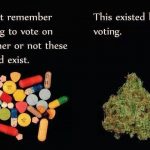Source: [Aljazeera
>http://www.aljazeera.com/indepth/opinion/2013/12/farc-may-answer-colombia-drug-woes-201312792621846977.html]
09 December, 2013
FARC may have the answer to Colombia’s drug woes
The peace talks under way in Cuba face many challenges, not the least of which is gaining the US’ support.
By Nazih Richani, associate professor of political science and Director of Latin American studies at Kean university.
The ‘war on drugs’ seems to be designed to be un-winnable [REUTERS]
Colombian President Juan Manuel Santos recently met with President Barack Obama in the White House in an effort to obtain – among other things – US support for his peace negotiations with the Armed Revolutionary Forces of Colombia (FARC).
Those peace talks – currently under way in Cuba – have been on-going since 2012. But the US administration has been lukewarm in its response to Santos’ peace overture to end the half-century-old civil war – the longest in Latin American history – which has killed more than 200,000 people and has displaced an estimated six million others.
Following his meeting with Santos, Obama did express support for the peace talks, but his administration has yet to produce a coherent position that could help make this peace initiative a success. The US’ stand is critical given its heavy presence and influence in Colombia. The country has become a major military launch pad for the US in the Western Hemisphere. During the last twelve years alone, the US has spent more than $8bn – through a legislation known as Plan Colombia – to help Colombia’s military prepare for a regional and international role, combat drugs, and fight the insurgency at home. Colombia is the third largest recipient of US military assistance after Israel and Egypt.
The so-called “war on drugs” approach, championed by the US, became an international mantra but its cost has been high, both economically, and in terms of the number of lives lost.
The peace talks between the Santos government and the FARC’s Marxist rebels are centred on a five-point agenda: rural development and land distribution; political reform and participation of FARC; narco-trafficking, reparation and recognition of the victims of the conflict; and finally, conflict termination. The first two points already have been agreed upon, although the full details have yet to be released.
The topic during this round of negotiations is narco-trafficking, one of the thorniest to tackle due to its international dimension.
De-criminalisation plan
FARC, which funds its war machine with income ($200-$400m annually) from taxing narco-traffickers who transit through its areas of influence, is now proposing a ten-point plan to rid the country of drug trafficking. The centrepiece of the plan is the de-criminalisation of drug usage as an alternative to the more than 20-year-old failed “war on drugs” strategy.
FARC’s proposal focuses on the socioeconomic and cultural aspects of the illegal drug trade.
It calls for an examination of the root causes that are leading poor farmers in Colombia and elsewhere to plant coca, poppy seeds, and marijuana; and seeks a viable solution – a strategy to develop sustainable alternative crops to secure the interests of those communities involved in illicit crop plantations.
It also asks the government to seriously fight the criminal organisations and paramilitary groups that are cashing in on the illegal drug trade, as well as to purge the state’s security apparatus which has been compromised by the drug economy.
Beyond Colombia’s borders, the ten-point plan shines a light on the global factors involved in narco-trafficking, in particular, world consumption and the role the international financial system plays in the business chain of the illicit drug economy. The numbers are telling. The United Nations Office of Drugs and Crime’s 2010 report, estimated that between 2007 and 2008, cocaine was used by an estimated 17 million people worldwide. Consumption from North America was 40 percent, while the countries of the European Union and four European Free Trade Association countries accounted for more than 25 percent.
FARC’s proposal also addresses the need to improve the existing regulations that govern the global financial system where most of the proceeds from illegal drug trade are being laundered and invested, and also highlights the international criminal organisations involved. FARC is not alone in identifying the need for reform. In a 2013 report, Transparency International, an organisation which monitors and scores global corruption, voiced similar concerns about the lax controls on money laundering.
The “war on drugs” campaign has become a multi-billion dollar enterprise that keeps the budgets of a number of US government agencies fat, and coffers of private companies full.
Finally, the FARC plan also calls out international companies that are supplying the chemicals needed to process coca to cocaine, which form part of the global web of interests that are tied to the illegal drug market.
Is the war winnable?
It is an ambitious proposal, but the central question is this: Whether the US, a key player in the Colombian conflict, would accept the thrust of FARC’s plan. Under the pretext to win the “war on drugs”, the US has spent heavily in Colombia to fight the insurgency, chiefly FARC, which it considers a “narco-terrorist organisation”.
The “war on drugs” campaign has become a multi-billion dollar enterprise that keeps the budgets of a number of US government agencies fat, and coffers of private companies full.
But is the war winnable? Consider some facts: According to the UNODC, cocaine production in Colombia declined by about 10 percent in 2012. But it is important to look at what is happening in the region before declaring the success of any measure. Peru has now surpassed Colombia in the number of coca plantations, regaining the number one rank after losing it over two decades ago. This shift from Colombia to Peru and Bolivia, the three main coca producers, is known as the “balloon effect” – if you punch a balloon on one side, it pops up on the other side. The evidenced balloon effects in coca producing countries, validates the argument that the “war on drugs” may be a futile, endless war, designed not to be won.
One illegal trade to another
One more important factor to consider in explaining the decline in cocaine production and coca plantations in Colombia, is that some peasants are shifting to illegal mining which can generate better economic returns with fewer headaches. If this behavioural shift on the part of the former coca planters is true, then this will further disqualify the whole logic of the “war on drugs”, questioning the causal links between the decline and policing, which include fumigation and forceful eradication.
The challenges facing the current discussion of how to address the narco-trafficking scourge are many, but critical to those challenges is the question of support from Colombia’s biggest ally to the north.
How would the US react to an agreement where FARC and Santos’ government concur that the solution to the illegal drug trade lies in the US and Europe, where demand for drugs is concentrated; and also in regulating the international financial system where the proceeds of the drug money are being laundered and invested? Probably not so well. Additionally, the US government has made it clear where it stands on legalising illicit drugs.
It is worth mentioning, however, that a new mood is evolving in Latin America where more leaders are calling for de-criminalisation and legalisation of drug usage as the most effective alternative to a failed and very costly strategy. President Santos is listening carefully to what his regional counterparts are voicing.
Nazih Richani is an associate professor of political science and Director of Latin American studies at Kean university.
The views expressed in this article are the author’s own and do not necessarily reflect Al Jazeera’s editorial policy.




 Creative Commons Attribution
Creative Commons Attribution